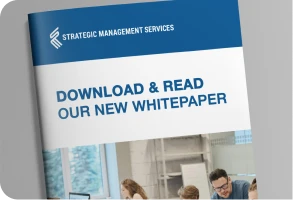Using Compliance Liaisons to Extend Compliance Office Reach
Key Points:
- What compliance liaisons are and what they do
- Regulators call for them at organizations with remote facilities
- Compliance liaisons can assume compliance-related responsibilities at outlying facilities
- Compliance liaisons extend the reach of the compliance program
- Compliance liaisons facilitate communication & coordination
Many compliance officers are confronted with the problem of how to extend the reach of the compliance program to outside facilities and locations. For many, engaging compliance liaisons can be the answer. They generally are not individuals who are part of the compliance office but report to other parties, in the organization, with a dotted line to the Compliance Officer. They can be used part-time to help bridge the two-way street gap in compliance communication. One healthcare sector where this is becoming very important is long-term care. OIG Compliance Program Guidance for Nursing Homes notes that organizations with multiple facilities should have the corporate Compliance Officer communicating with parallel positions in each facility or regional location. This sector is one of the few areas with mandated guidelines that must be followed. Under the Affordable Care Act, CMS has established mandatory guidelines for long-term care, including having a compliance presence at each nursing home for organizations with five or more facilities. CMS and the OIG have provided little guidance in defining qualifications for liaisons or the exact duties they would perform. This is left to the decision of the organization. However, when those decisions are made, they should include a definition of duties, responsibilities, and reporting in their job description.

Establishing a Successful Compliance Liaison Program
A critical first step in moving down this path is getting buy-in and support from corporate and local leadership. To gain that support, it is important that the function and process be clearly outlined and defined as to the purpose and operation in reducing compliance risk exposure and why that is in their best interest. Local leadership will also need to make the person selected available to undertake training on their duties and provide time to carry out duties. To ensure a successful Compliance Liaison program, it is important that: (a) duties and responsibilities are described in detail and included in their job description; (b) there is adequate time, resources, and ability to be able to perform duties; (c) there is an appropriate level of support from local leadership; and (d) proper training and orientation to duties is provided. This becomes a matter of determining who would perform the role and the number of hours per week required to carry out the duties. Once selected, the Liaisons need to be trained in carrying out their responsibilities and have a positive attitude and willingness for the job. Defining the role and duties is a matter for the organization to decide, but the following offer ideas in making that decision.
- Provide a compliance communication channel to and from the Compliance Officer
- Serve as the contact person to respond to compliance concerns or questions
- Report allegations of wrongful behavior to the compliance office
- Represent the Compliance Officer at facility-level meetings
- Assist with compliance education and training programs
- Raise and maintain compliance awareness
- Assist with the implementation of a compliance work plan
- Assist with resolving allegations and complaints
- Ensure documenting disciplinary actions of those found to have engaged in violations
- Assist with ongoing monitoring of compliance in high-risk areas
- Identify and address risk areas
- Assist in drafting department guidelines
- Develop effective auditing/monitoring plans
- Refer issues to and collaborate with the Compliance Officer
- Assist in and contribute to the risk assessment process
- Assist with the distribution of the code of conduct and compliance policies
- Assist with compliance training and track employee participation
- Serve as a resource to address business conduct questions within their area of responsibility
You can keep up-to-date with Strategic Management Services by following us on LinkedIn.
Subscribe to blog